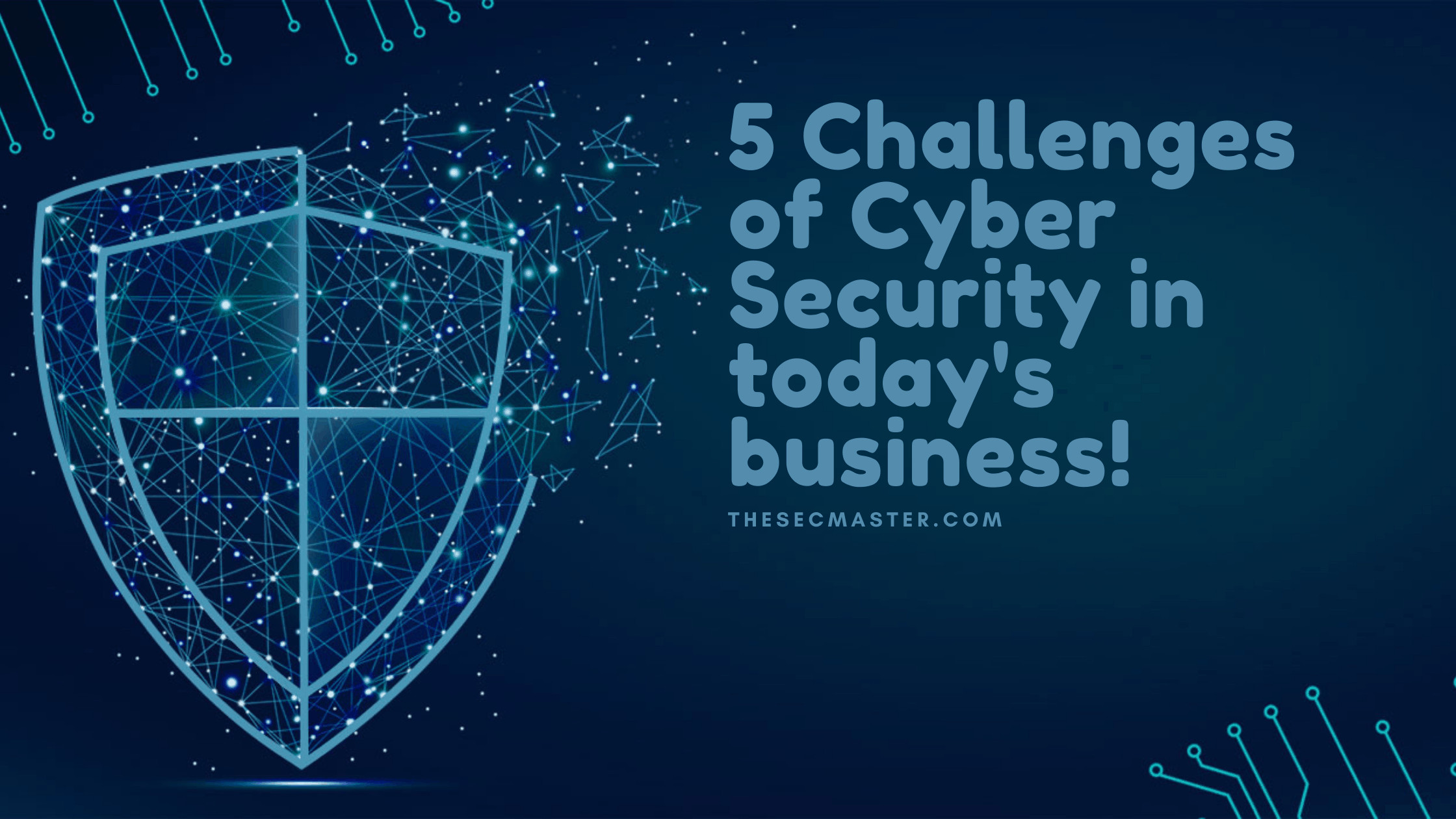Table of Contents
5 Challenges of Cyber Security in Today’s Business!
The risk of cyberattacks keeps increasing along with the organization’s growth. This demands a better defense system. There are plenty of challenges in developing a better security system. All these problems are building terrific pressure on the security teams of the organizations. Let’s discuss all the possible challenges of Cyber Security in business.
Before we begin with How AI can help to solve complex security problems, let’s list down the problems the security teams are facing in protecting the organizations. Most people think cyberattacks against the organization are the only major problem facing the business. But, there are a lot of other challenges companies are dealing with. Let’s list five such challenges of Cyber Security in business.
#1. Growing IT Infrastructure:
If a company wants to expand its business, it has to increase its infrastructure. This growing infrastructure is creating a new challenge for businesses. As much as infra grows, it increases the number of assets as well. For example, if there is an increase in the number of employees, it would need more workstations and servers. This will again increase network traffic and database size as well. So more network appliances are required to manage the business. As companies grow more and more, the associated risk with the assets will also grow. This increases the burden on the companies to protect their assets and data. Companies should try adopting new management skills to deal with growing IT infrastructure, or else they may have to face security failures.
#2. Heterogeneous Echo System:
Organizations will have to deploy multiple assets running on multiple platforms. Like, servers running on Windows and Linux operating systems. Network appliances are running on several vendor custom platforms. Workstations running on Windows, Mac, and Linux. Centrally managing all the assets running on different platforms is practically not simple for a small security team. Because each platform is different from the other in many ways, their operating system is developed on a different architecture, so the command-line interface is different then each other, configurations are different, they generate the logs in a different format, overall the way of management is totally different from one another. This may need a high technical knowledge with good security tools to manage such a heterogeneous echo system. A heterogeneous echo system is considered one of the challenges of cybersecurity in business until companies will learn to manage it in a better way.
#3. Technical Competency:
Technical competency is one of the major challenges of Cyber Security when it comes to people. People will have to upskill themselves with thriving technology as threat actors and cybercriminals evolve themselves with new technologies. Companies try to acquire new technologies to protect their data and assets from being compromised. Security professionals should also be updated with emerging cyber-attacks and adapt themselves to work with upcoming technologies. Or else Companies will have to lose in this rat race with cybercriminals. This rapid change in technologies is emerging as a new challenge to Cyber Security in business.
#4. Security Tools Limitation:
Security tools play a major role in protecting companies from cyberattacks. Companies use different types of security tools to protect their assets and data. Network Firewalls, IPS/IDS, Antimalware software, Vulnerability scanners, Endpoint Security tools, Web application proxies, Security Incident Event Management (SIEM) tools., Data Loss Protection (DLP), and many more tools for different levels of protection. Most of these tools work either on rules or signatures. All these tools have some technical limitations, which could create a negative consequence if not configured in the right way. If the rule is not configured in the right way, there is a possibility of false alarms. On the other hand, there could be a chance of detection failure.
Example: IPS/IDS tools will work only on signatures. IPS/IDS tools can only identify the attacks only if the attack is stored in its signature database. If there is a new attack comes and there is no signature for the attack, the IPS/IDS device doesn’t recognize that as an attack.
#5. Around The Clock Monitoring:
There is no perfect time for the attacks to happen. Attacks could happen at any time. It is important for companies to monitor incidents all the time. A small period of the gap could cause an enormous amount of damage to the business. Time is the key factor when it comes to damage control. An ideal security system should be alerted around the clock and should be responded to within a few seconds for any reported incidents. But, when it comes to practical things, it may not work that fast. Monitoring 24/7 is one of the challenges of Cyber Security in business.
Final Things:
Cyberattacks are considered the primary challenge of cybersecurity in business. But that’s not the only one. There are a lot of other challenges associated with cybersecurity. We believe this article helped in understanding some of them.
Thanks for reading this article, and read more interesting articles like this here.
You may also like these articles:
Arun KL
Arun KL is a cybersecurity professional with 15+ years of experience in IT infrastructure, cloud security, vulnerability management, Penetration Testing, security operations, and incident response. He is adept at designing and implementing robust security solutions to safeguard systems and data. Arun holds multiple industry certifications including CCNA, CCNA Security, RHCE, CEH, and AWS Security.
